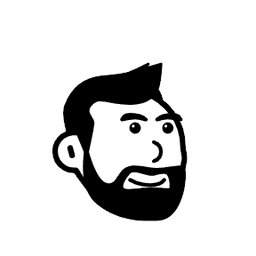With the database set up, we can now add more models. Thinking about it, we can see three models right now:
User (which we already have).
Feedback.
Town.
model User {
id Int @id @default(autoincrement())
email String @unique
password String
Feedback Feedback[]
Town Town @relation(fields: [townId], references: [id])
townId Int
}
model Feedback {
id Int @id @default(autoincrement())
content String
user User @relation(fields: [userId], references: [id])
userId Int
town Town @relation(fields: [townId], references: [id])
townId String
}
model Town {
id Int @id @default(autoincrement())
name String
zipCode String
users User[]
Feedback Feedback[]
}
This is what first comes to mind, so now let's get a Reddit post to see a similar example to add more things to it.

Seeing this, we can already add a Vote and a Comment model. We can also add the created, updated, and deleted timestamps to the new and existing models.
Regarding the user, we can also add a profile image, which will be the URL for the image stored somewhere else (probably Uploadthing). Speaking of images, each Feedback will have one or more images (or maybe none), and they’ll also be stored in Uploadthing.
When it comes to roles for the users, they’ll all have the role "CITIZEN" (as they are), but admins will be needed so the content is moderated somehow (there’s always someone trying to mess things up).
generator client {
provider = "prisma-client-js"
}
datasource db {
provider = "postgresql"
url = env("DATABASE_URL")
}
model User {
id Int @id @default(autoincrement())
email String @unique
password String
name String
profileImageId Int? @unique
profileImage Upload? @relation("UserProfileImage", fields: [profileImageId], references: [id])
role String @default("CITIZEN")
createdAt DateTime @default(now())
updatedAt DateTime @updatedAt
deletedAt DateTime?
feedbacks Feedback[]
town Town @relation(fields: [townId], references: [id])
townId Int
comments Comment[]
votes Vote[]
uploads Upload[] @relation("UserUploads")
}
model Feedback {
id Int @id @default(autoincrement())
title String
content String
category String
status String @default("PENDING")
user User @relation(fields: [userId], references: [id])
userId Int
town Town @relation(fields: [townId], references: [id])
townId Int
createdAt DateTime @default(now())
updatedAt DateTime @updatedAt
deletedAt DateTime?
comments Comment[]
votes Vote[]
priority String @default("LOW")
images Upload[] @relation("FeedbackImages")
}
model Town {
id Int @id @default(autoincrement())
name String
zipCode String
state String?
country String?
population Int?
description String?
website String?
users User[]
feedbacks Feedback[]
createdAt DateTime @default(now())
updatedAt DateTime @updatedAt
deletedAt DateTime?
}
model Comment {
id Int @id @default(autoincrement())
title String
content String
user User @relation(fields: [userId], references: [id])
userId Int
feedback Feedback @relation(fields: [feedbackId], references: [id])
feedbackId Int
createdAt DateTime @default(now())
updatedAt DateTime @updatedAt
deletedAt DateTime?
}
model Vote {
id Int @id @default(autoincrement())
type String
user User @relation(fields: [userId], references: [id])
userId Int
feedback Feedback @relation(fields: [feedbackId], references: [id])
feedbackId Int
createdAt DateTime @default(now())
updatedAt DateTime @updatedAt
deletedAt DateTime?
@@unique([userId, feedbackId]) // One vote per user per feedback
}
model Upload {
id Int @id @default(autoincrement())
name String
url String
userId Int
user User @relation("UserUploads", fields: [userId], references: [id])
feedbackId Int?
feedback Feedback? @relation("FeedbackImages", fields: [feedbackId], references: [id])
userProfile User? @relation("UserProfileImage")
createdAt DateTime @default(now())
updatedAt DateTime @updatedAt
deletedAt DateTime?
}
To make this clearer, I’ve generated a UML diagram from the prisma.schema. I had to generate it with an extension in Cursor because there is none available for Zed that does so. This is the extension I used (in case you are curious).

With this diagram, all relationships become clearer to see, but there is one key relationship that I’m going to explain:
@@unique([userId, feedbackId]) (Vote table)
This constraint ensures that a user can only vote once per feedback. It’s called a composite uniqueness constraint, and in this case, it means that the combination of a userId and a feedbackId must be unique in the votes table.
Why do we need this?
First of all, to prevent vote manipulation.
Also, we want voting to be fair by making sure each user has only one vote per feedback.
That's it for this part.
Salut, Jordi.
Check the repository HERE.

